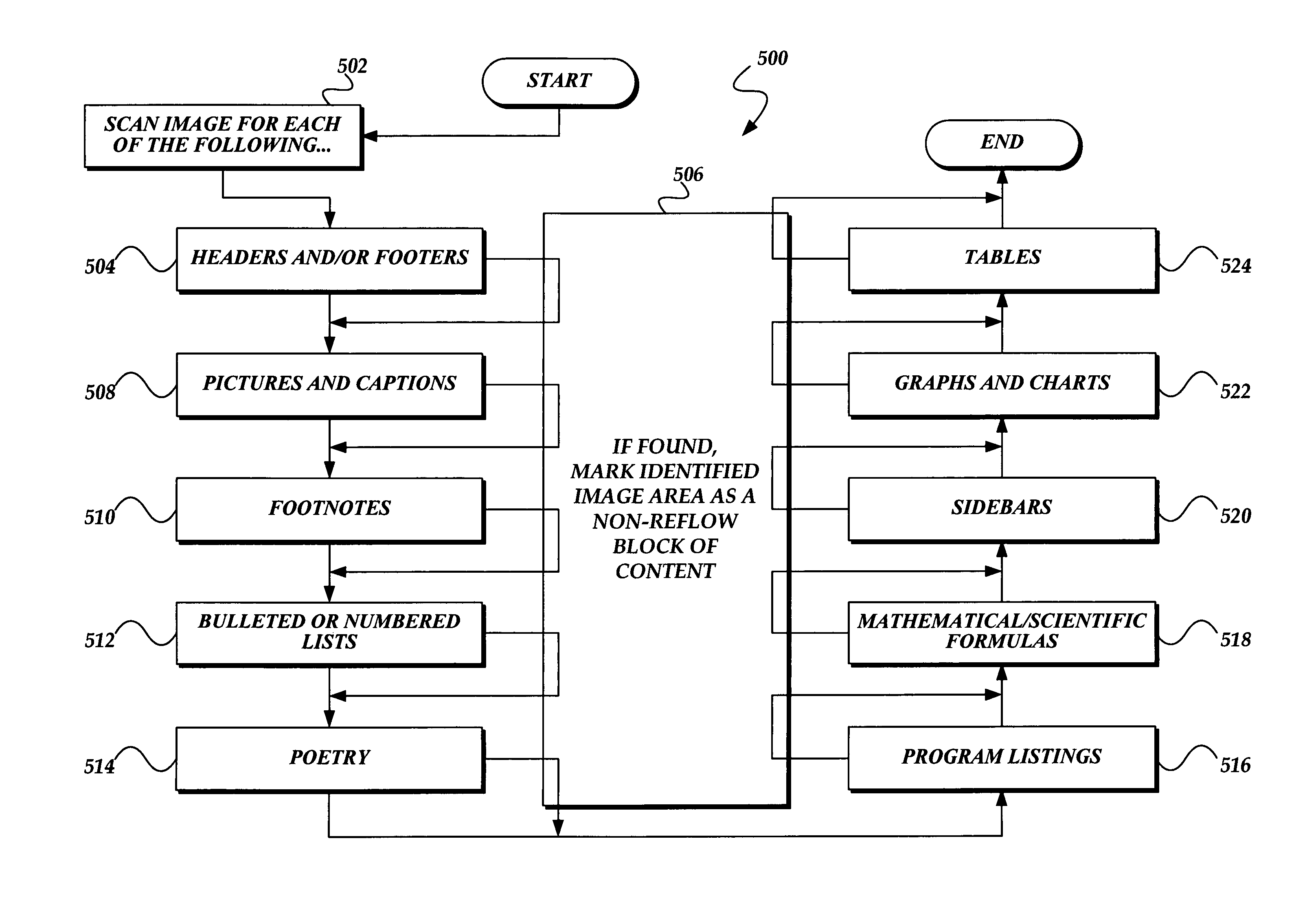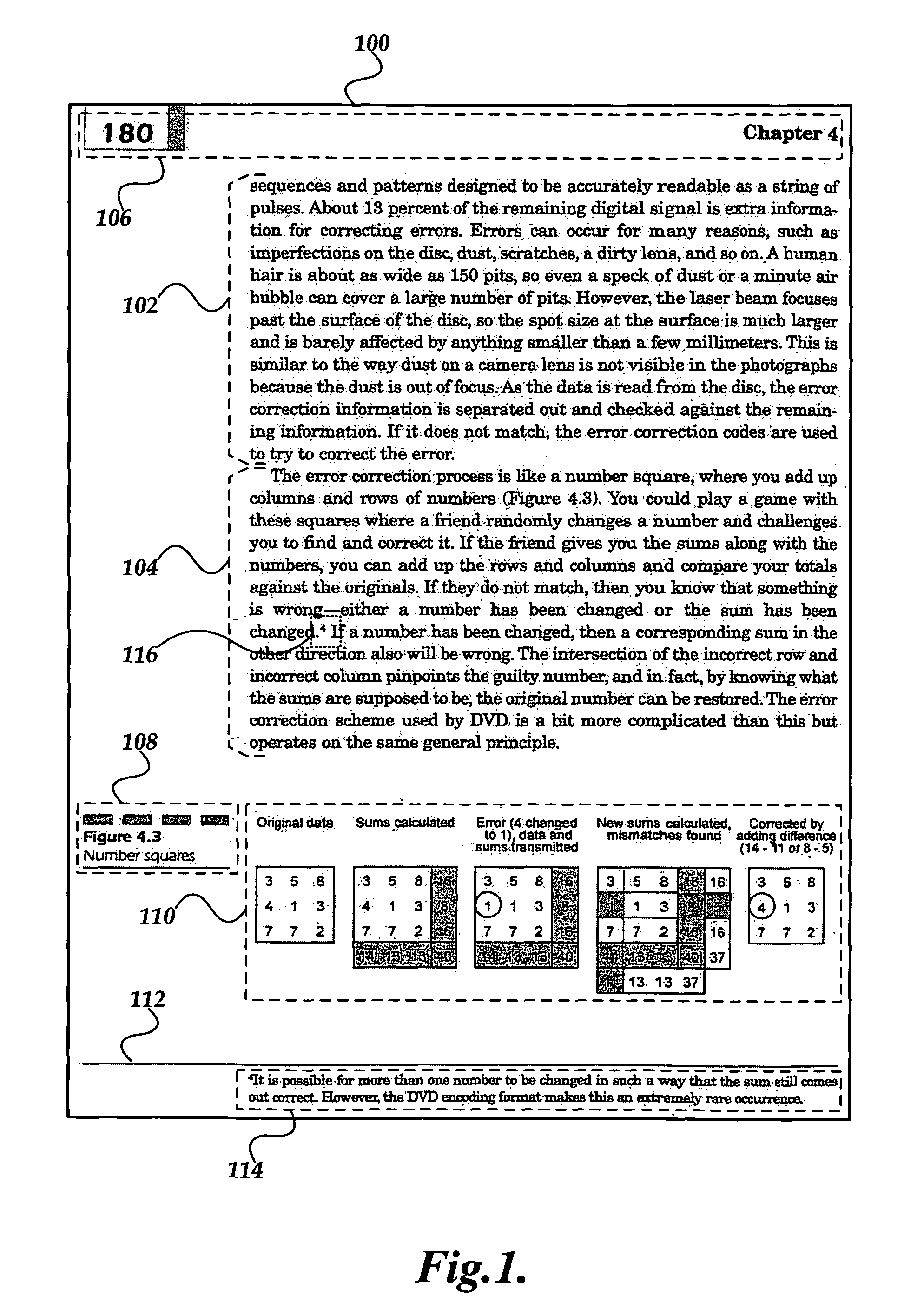Generating reflow files from digital images for rendering on various sized displays
a technology of reflow files and digital images, applied in the field of content processing, can solve the problems of not being digital images corresponding to the conversion of pages of a book into electronic forms may not be able to meet the requirements of various viewing scenarios, and the clarity or resolution of digital images may not be suitable for certain viewing scenarios
- Summary
- Abstract
- Description
- Claims
- Application Information
AI Technical Summary
Benefits of technology
Problems solved by technology
Method used
Image
Examples
Embodiment Construction
[0030]The following detailed description provides exemplary implementations of the invention. Although specific system configurations and flow diagrams are illustrated, it should be understood that the examples provided are not exhaustive and do not limit the invention to the precise forms disclosed. Persons having ordinary skill in the field of computers, digital imaging, and content conversion, will recognize components and process steps described herein that may be interchangeable with other components or steps, or combinations of components or steps, and still achieve the benefits and advantages of the present invention. Moreover, in the following description, numerous specific details are set forth in order to provide a thorough understanding of the invention. It will be apparent to one skilled in the art, however, that the invention may be practiced without some or all of these specific details. In other instances, well-known process steps have not been described in detail in ...
PUM
 Login to View More
Login to View More Abstract
Description
Claims
Application Information
 Login to View More
Login to View More - R&D
- Intellectual Property
- Life Sciences
- Materials
- Tech Scout
- Unparalleled Data Quality
- Higher Quality Content
- 60% Fewer Hallucinations
Browse by: Latest US Patents, China's latest patents, Technical Efficacy Thesaurus, Application Domain, Technology Topic, Popular Technical Reports.
© 2025 PatSnap. All rights reserved.Legal|Privacy policy|Modern Slavery Act Transparency Statement|Sitemap|About US| Contact US: help@patsnap.com



